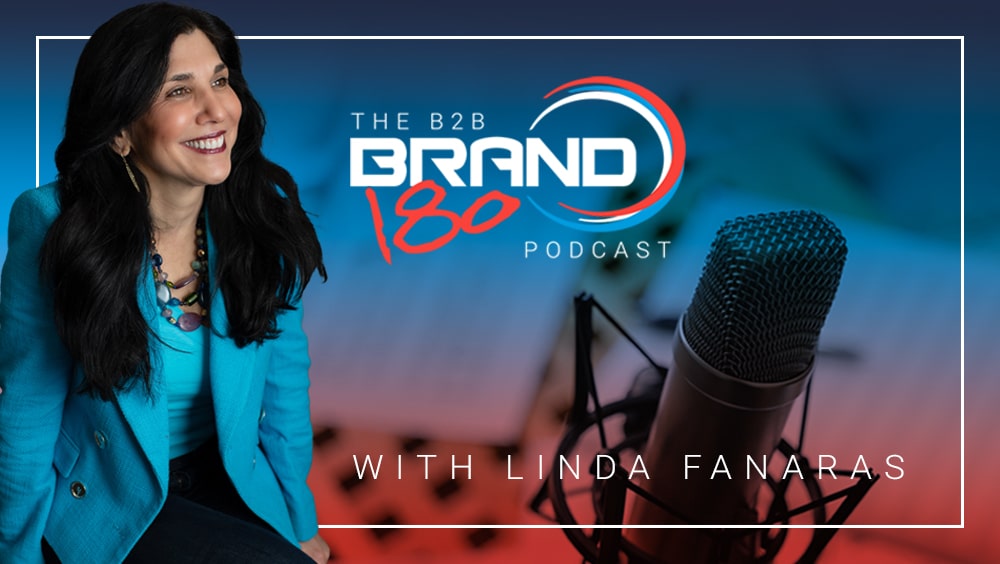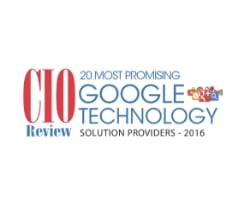In this episode of B2B Brand180, Linda Fanaras interviews Kevin Lee, a seasoned advisor, investor, author, “multipreneur,” and strategist. They discuss the evolving landscape of branding and marketing, sharing insightful strategies that can propel a B2B brand forward in today’s competitive market. Kevin also opens up about his entrepreneurial journey, revealing how he’s been able to navigate the challenges and opportunities through business acquisitions and synergies. If refining your branding message, exploring innovative marketing strategies, or understanding the entrepreneurial journey in the B2B sector are on your agenda, this episode is for you.
Follow Kevin Lee on LinkedIn: https://www.linkedin.com/in/variousventures/
You can follow Linda at: https://www.linkedin.com/in/lindafanaras/
and Millennium Agency at https://www.linkedin.com/company/millagency/.
Linda Fanaras: 0:00
Hi, I’m Linda Fanaras, host of the B2B Brand180 podcast and CEO of Millennium Agency. And today we’re going to talk about some branding, messaging, and marketing strategies. And before I get started, I just want to thank our audience, take a minute and thank you for listening in. And if you like and share or subscribe or even provide a review for our podcast, that would be fantastic. But I’m actually extra excited today because I brought in Kevin Lee, and we bonded because we are both entrepreneurs and we love to start businesses and do something new and innovative. And it always keeps the excitement going in our lives. So, a little bit about Kevin he owns and operates three entities. One is called Didit.com and he’ll speak a little bit about that. Another one, which is eMarketing Association. And then the third one is what we call GivingForward.org. So he’s definitely a superhero. He has three entities, maybe some others that I might not be aware of. But he’s also on top of that has written four books. He’s done 500 speaking engagements and he’s done 750 columns, which is just quite impressive. So what I, he’s what I call like a transformational expert. So if you need one, he’s your guy. Welcome Kevin to the B2B Brand180 podcast. It’s great to have you here.
Kevin Lee: 1:20
Thanks, Linda. A pleasure to be here. Thanks for inviting me. And I think they’re calling it multipreneur now when you have your fingers in multiple pots at the same time. The one additional brand is the one up on the shelf behind me, which is Truth Nutrition, which is a nutraceutical company that I bought a few months back mainly to give me a full working marketing lab to try everything that I ever wanted that a client would never say yes to. Now I can do it under Truth Nutrition and we’ve got a bunch of new products coming out in about a month and a half as well and at that point we’ll hit the gas and try everything that we, we always wanted to try that clients wouldn’t say yes to under did it.
Linda Fanaras: 2:02
That’s awesome. That’s a great idea. You can use that as a pilot opportunity to show them some of the results that you’re, that you’re creating. So why don’t I have you take a couple minutes, tell us, tell the audience a little bit about yourself and then we’ll get into some questions.
Kevin Lee: 2:16
Sure. Yeah. I’ll try to give a Reader’s Digest version. I’m old, so I’ve had quite the journey along the way. So I’ll try to bake it into a Reader’s Digest version. I started did it 26 years ago as an SEO technology platform that evolved into one of the first bid alert and bid management platforms for paid search. So we were a SaaS-based company for a long time, managing millions in competition with a couple of platforms, some that were owned by Google and one is still publicly traded called Marin software. The challenge with us competing with Marin is that they’ve never had a profitable quarter to my knowledge. So they continue to burn through cash. So it’s very, it was a very difficult, difficult category to be in. You know, along the way, I actually started a cause marketing for profit company called We Care. I happen to have that shirt on today. We raised 8 million, over 8 million for nonprofits in that category. And as we were going through, we evolved, did it into more of a full service agency. We made 11 acquisitions Of other marketing services firms, but we’re still very much SEO paid search paid social paid media and other forms of earned media at the core We have a direct mail division. I’ve invented some technology in the direct mail division as well we care ended up becoming essentially the inspiration for Amazon Smile 11 years ago, and Amazon ran Smile for 10 years and shut it down on President’s Day, so now my non profit Giving Forward has taken up that challenge and run with that, building a multi merchant, multi non profit charity mall, so, the eMarketing Association is just really another hobby project. I acquired that as a result of essentially a good deed I did in relationship to the family that used to own it. Thank you. Thank you. And then at some point, I just sort of inherited it essentially. So, wrapping up events under the EMA this year and into next year as well as potentially the continued podcasts of which you were a guest. Thank you very much for doing that. So that that’s been the journey along the way. There’s been all sorts of little side ventures, like trying to buy Gawker out of the bankruptcy for good, right. Which was before I gave up on WeCare. That was my last Hail Mary pass. I got a ton of publicity trying to buy Gawker out of the bankruptcy, and that was a fun adventure as well.
Linda Fanaras: 4:30
So what I like about what you have done with your entities is they’re interconnected in one way or the other. Is that a purposeful? Acquisition of those all purposeful lack is acquisitions. Or did they just fall into your lap and you say, okay, I could, I can make this work or this looks interesting. So how, how did you go about some of those decision making?
Kevin Lee: 4:48
It’s been a combination of sort of serendipity luck and, and strategy. Sometimes the strategy evolved sort of as the serendipity or luck happened, right, wasn’t really in market to acquire the marketing association. But once I had an opportunity to acquire it, I realized that. I love educating and sharing best practices, and I had already done all the columns and I had already done been on the advisory board of the E. M. A. And I had been on the founding board member of sample dot org, the search engine marketing professionals organization. So It very much was in keeping with my psyche to want to elevate everybody in the industry up to the next level and owning the EMA was a great way to do that. And of course, the fact the byproduct of that is that it generates leads for did it. And so. You know, it’s sort of a no brainer strategically. Once you think about it. Yeah. On the truth nutrition side, as it happens, that was really again, more having both sides of a marketing lab, because I realized that as an agency, if your lab partner, who’s the client is not willing to run the experiment with you, you can’t run the experiment. And so I wanted to have the ability to do that and from a giving forward perspective, interestingly, going back into the, the charity mall business in partnership with merchants. Again, those are the same merchants that I would have as guests on my podcast for the EMA, the same merchants who we could help with SEO or paid search or paid social as, as did it. I can change my hats in real time. I’m having a conversation with these merchants or with these B2B partners as well. I mean, a lot of the same folks who might speak at an EMA event would potentially, you know, be B2B clients for did it because about 55 percent of our clients are B2B.
Linda Fanaras: 6:33
So what are you finding on the did it side that tends to be the largest marketing challenges that companies are facing today? Are there certain areas that you think keep coming up time and time again?
Kevin Lee: 6:45
Yeah, I mean, it’s amazing from the very largest clients and prospects all the way down to the medium size. We try not to go SMB, so medium size is sort of our minimum, but the inability of the companies to understand their internal business intelligence and their internal KPIs to the extent that they can tune their marketing campaigns. to reduce waste and increase efficiency is a common thing, right? I mean in B2B it’s sometimes even more complex than B2C because you’ve got long sales cycles. It takes a while to understand the LTV and stickiness of a B2B customer in comparison the average customer to a great customer. And not having that information at your fingertips handicaps you from a marketing perspective. You don’t know how to find more of those same customers that are your best customers as opposed to an average customer. And so that seems to be a common theme with many prospects. And, and one of the first things we do is we’re, as we’re evaluating prospect and how much we can help them as, as an agency is really try to see to what extent can we get at that given. The tracking systems they have in place, the business intelligence that they have in place. And even if they don’t have that, we try to make that aspirational. how can we take them step by step closer to that nirvana of understanding, here’s what a great customer looks like in comparison to an average customer. Once you have that, everything else flows out of that. And if your strategy flows out of that, your tactics flow out of that, your channel marketing mix flows out of that, your budgeting across paid media versus earned media flows out of that, everything is driven off of the true understanding of what the best customers look like,
Linda Fanaras: 8:26
right? And you know, what’s so interesting because I’ve been reading a lot about some middle market move and movers, and basically it’s Finding that optimum customer, who are they and where are they in the buying cycle and how do you find them? What size business are they? What’s their title? From a marketing perspective, where are they on the marketing life cycle? Are they ready to buy? are they getting ready to get rid of a prior agency? And the more intelligence you have on that, the better you are as a marketer to be able to use that insight to actually sell and move them along that. That process.
Kevin Lee: 8:56
Yeah, absolutely. I agree with you 100 percent on that. And interestingly now in B2B in particular. When CFOs are pushing marketing austerity on the sales teams and the marketing teams, it’s even more important to know, right? Because they’re saying you have to do more with less. Your budget’s cut by 15%, right? And so, well, where are you going to cut? Well, if you don’t know. where your best customers and best leads come from. You don’t know where to cut. So it, when marketing austerity hits, it’s even more important when it’s drunken sailor money and every, everything is great, not as important. Right. But when marketing austerity gets pushed down from the CFO for the C suite it’s even more important. It does.
Linda Fanaras: 9:38
And I think that’s another topic I do want to talk about is the ROI, which I’m sure you have a lot of analytics and tracking into a lot of the campaigns that you build out. But I do, you know, and I think that sometimes that’s the challenge with marketers, especially if they want to add product lines or they’re trying to extend a brand, how do they balance their budgets in a way that actually allows them to get, to put enough money into the new. Let’s say it’s a brand extension to get some traction and have, how do you advise your clients on, on things like that?
Kevin Lee: 10:10
That, you know, example of a brand extension or something that could be cross sold to existing customers. I really should think of that as a share of wallet or upsell cross sell opportunity, depending on whether you’re thinking in a B2B context or B2C context. And obviously those are the kinds of KPIs increasing your share of wallet to the extent that you’re not getting all of a customer’s money. Or you know, increasing longevity or increasing average order value in the case of a simple B2C transaction. Those are the types of changes that you make to a business which add leverage. What I mean by that is, marketing leverage is like compound interest, in that when you manage to get an improvement in AOV, or an improvement in LTV, or an improvement in the ability to cross sell, into a client, right? That means you can actually afford to spend a little bit more on marketing than you could before you did that, right? So when folks come to us and say, Hey, you know, I’m trying to think about ways to move my business forward. And, you know, the top line and at the bottom line, and it has to do with a, a brand extension or product extension or upsell cross sale opportunity. Or again, in consumers, it’s simple, simply, you know, either. AOV for media checkout or LTV in the case of, you know, getting more money out of that customer over time. So all that stuff is leverage. It is super powerful in marketing. Everything’s auctioned off these days, right? When it comes to patent and paid media, so your ability to afford media is not a negotiation like it used to be. 20 years ago, where you can sit down and have a three martini lunch with a rep and like negotiate them down. Now it’s an auction. It’s an auction in search. It’s an auction in social, you know, you have to be able to afford the media. Those
Linda Fanaras: 11:53
things have changed, haven’t they? Sometimes I prefer those. The
Kevin Lee: 11:58
irony really was, I mean, if you think about how media was bought 20 years ago, They would give you a discount for buying more. Now, you pay a penalty for buying more because you’re in an auction. So if you want that next piece of inventory, that next video impression, that next audio impression, that next paint search impression, you’re going to pay more at the margin than you did before. That enforces a level of rigor that you didn’t need to have 20 years ago.
Linda Fanaras: 12:26
And that’s really where the analytics comes in to really prove. You know, what, what’s working and what’s not. And being, being able to bring that back to either C F O or somewhere, or c e o to explain to them, we need to expand our marketing budget and here’s why it’s working. Right. I’d love to talk a little bit about the e Marketing Association. I think it’s a great entity. I’d love to just get a snapshot of what that’s about. How. Benefits individuals and, and what you, what you’re bringing to the table with that association right now. Sure.
Kevin Lee: 13:00
So we haven’t turned membership back on yet because we haven’t felt like we’re in a position to provide sufficient value to do that. However, we’ve got a bunch of events being planned and there’s two types of events being planned. One set of events will probably be very New York City centric because we have sort of a home team advantage here to be able to have an event where we have a venue sponsor who hosted in their large conference room or their lobby. And then we make sure that the topic and the people we bring to that event are in keeping with the kinds of folks they would like to talk to. But it has to meet the educational hurdle, right? It needs to have a panel up front that’s educational that everybody can learn from. And so we’ll start with those types of events and then we’ll start rolling out full. Full day events as well. Again, in keeping with the mission of the e marketing association and my personal mission, that I feel like a well educated marketer is a more powerful member of the executive team, right? You see more and more CMOs taking over the CEO role lately. And I think that’s partially due to the importance of marketing, but it’s also partially due to the fact that a lot of the marketers who used to come with purely creative chops. into the role now come with the math chops as well, you know how to read a balance sheet because analytics in relationship to their marketing role roll very easily into understanding the balance sheet, assuming they’ve taken accounting and they only have a good CFO partner to help them.
Linda Fanaras: 14:26
That sounds like a great organization. I think there’s gonna bring a lot of value and marketing is always changing. And that’s, that’s, I think that’s a great thing about what we do is it never stops. I mean, if you just shut your eyes for five minutes, you know, it’s far beyond you. So whatever the big transition is, whether it’s technology or moving from like waxing paper to getting it to the printer. I mean, it changes overnight. So I think it’s really important for marketers to stay abreast of what’s going on on a consistent basis. Don’t take a nap. Doesn’t work, not in what we do today. So I think having an organization and association like yours, just. Adds another level of academics and education to the marketer. So that’s, I think that’s fantastic. So it sounds like it’ll be events. It’ll be education resources, networking that’s great. So I love to learn, cause I think this is great. The fact that you did giving forward, but love to learn, a little bit more about that, how that, you know, brings value to individuals and, and get some insight from
Kevin Lee: 15:26
you. Sure. What was fascinating about smile is, you know, 10 years ago when Amazon was inspired to launch smile, people didn’t really understand about cause marketing powered commerce and shopping. And they really, brought it to a large group of individuals. I mean, 20. Billion dollars last year was transacted through the small side of Amazon. Now, of course, that’s that’s been shut down. But what’s fascinating is the people who learned about it include not just the consumer, right? But B to B buyers are also consumers as well. So our vision for as we roll out giving forward is to not exclusively focus on cause marketing powered commerce for the consumer, but cause marketing powered commerce for the business as well. Right. So we’ve got a lot of partners already in giving forward and a bunch more rolling out that start from the very simple B2B ones. Like we’ve got staples and office max depot in there, but also we’re adding in, companies that do incorporation and companies that, that sell, you know, access to legal documents and companies that, that handle B2B, right. And they also all have performance marketing platforms that we can play, like we can plug into them at impact. Or, or C. J. Or rocket 10 or one of the other platforms. And then from that point forward, we can, you know, use our leverage as a cause marketing platform to say to the businesses that are going to engage with other B to B to B partners. Hey, check to see if you’ve got, you know, if somebody in the giving forward platform will simultaneously meet your needs, but also potentially help a nonprofit that you get to pick as you engage with that partner. So we’re looking forward to deploying entrepreneurs a lot of cool stuff under giving forward, not in a b, purely a B two C context, but a B two B context as well. So that you know, there’s, and, and there’s co-registration and some other monetization channels that we’re layering in on top of smile.’cause Amazon really never assigned a product manager to smile. It, it, it sunset. Pretty much identically to where it launched, whereas I already have started to layer on a bunch of additional features and functionality that we’ll be deploying shortly. Yeah,
Linda Fanaras: 17:35
I noticed when I went in there, which I think individuals should check that out, is that some of the, some of the donation numbers were up to 30%. I was, I was just shocked.
Kevin Lee: 17:43
Yeah, yeah. Well, again, you know, when you’ve got sass companies or companies that sell intellectual property, you can afford to be very generous right now on that, whereas Amazon’s margin on products exactly thin and therefore, you know, they had limited themselves to half a percent. So, yeah, we’re super excited about what we’ll be able to do with some of these partnerships Where the, the rev shares to, to giving forward, which then we give 70 percent to the cause that the individual chooses, right? We’ll end up being pretty material.
Linda Fanaras: 18:14
Sounds great. Oh, well, it sounds like if you meet somebody, you definitely have something to talk about, whether it’s one of the several entities that you own. So that’s easy enough. So on the back to the marketing side on the did it, how do you go about, working with clients figuring out what their needs are and then, trying to identify a plan and strategy that fits their overall goals.
Kevin Lee: 18:37
It depends how we came across them. I would say probably, About 60 percent of the time people come across us to solve a very specific problem that they believe that they have And they may think it’s their most their biggest problem, right? So maybe it’s an seo problem or they feel like their paid search or paid social or paid media is not optimized And in those cases, it’s easy enough to go in and audit that specific Element and tell them how much upside is available within that very specific element. I would say maybe 40 percent of the time folks come in and say, listen, you know, my internal team’s just too thinly staffed to, to do everything. I really want you more as agency of record. I want you to have everything right. And that would include even direct mail. We’ve got a direct mail team, for example, and I’ve invented some technology around direct mail that makes it uniquely powerful, particularly in B2B. So sometimes they’ll come to us and say, We’d like you to pitch us on being our our say an extension of our entire marketing team, right? We’re equally comfortable in either case. Now, oddly enough, what ends up happening probably more than half the time when we go in as a point solution to solve a very specific problem is once the client’s team has a chance to interact with the did it team and we’re solving their problems, it just naturally cross sells into our other things because they they suddenly realize How great my team is and I really give kudos to my team exactly that my team sort of expresses their subject matter expertise and may even say oh, you know, this will work better if that Tangential piece of your business works better. And then of course the client says well, I don’t know how to fix that Can you help us fix that too? Right, right. It has to do with that concept of compound marketing where you know If you improve your efficiency of your media and your landing page and your upsell, cross sell and your LTV, all those things, you know, add, add to your EBITDA, right. So, so yeah, that’s, that’s how we’ve been engaging. We’re indifferent to either one. If a person comes in with a very specific problem, we won’t say, no, we’ll only work with you as an AOR agency record, because, you know, that doesn’t really, It derails the whole conversation. But I prefer to like go in there and help them with what they’re raising their hand on first.
Linda Fanaras: 20:57
Yeah. We find too, that a lot of times clients, you know, they like to start small, especially with a new agency to make sure that you can prove yourself. And I did want to make a point because direct mail is back. Those numbers keep going up. So people are, reverting back to sort of, the old days, I guess I’ll say, but we’ve come a long way because there’s so much data that’s available to us on personalization. So, I don’t know if you want to speak to that a little bit, that we have personalized images using names, we have QR codes, we have deals, we’re pulling in. Prior purchases. Do you want to speak about direct mail and how that has changed and how you can maybe integrate that into other strategies?
Kevin Lee: 21:38
Sure. Sure. I mean, there’s a few things obviously on the direct mail itself used to be that most of the printing that went out as direct mail was on a lithographic press. The only thing that changed was the name and address on the envelope right now. With variable digital printing, you can change everything and hyper personalize your direct mail to the individual recipient, including custom QR codes and personalized URLs and custom content in the piece, which makes that piece resonate more with the recipient, of course, improving the results. You know, during the pandemic, oddly enough on B2C direct mail, the response rates went way up because people were at home, right? Now we have to even be more innovative on, on B2B mail. And try to append recipients home addresses onto the lists so that we don’t just snail mail them at the office Because they’re only in two or three days a week and the rest of the time you’re at home So you have to figure out how to again be more strategic around that and you know being able to append additional information And do sort of abm, but or even more sophisticated than abm style marketing by just appending more information onto the individual and the company record allow you to tune that direct mail to again, the predicted LTV or the predicted size of that prospect or the predicted value of that prospect and then of course once you’re using custom qr codes or custom pearls That can kick off the crm and let the sales team know. Hey, these are glen gary leads, by the way They didn’t actually fill out The form on the thank you pay on the landing page, but we still know they were interested because they scanned the QR code. And of course, you have to make that clear on your direct mail piece. So that’s not creepy. The person realizes that it’s hyper personalized to them so you can greet them on the landing page, potentially, and also know, you know, have them know that that they’re being tracked, but in a nice way, right? Not exactly the way. Yeah, I
Linda Fanaras: 23:30
know. There’s some serious power in the numbers when it comes to that and integrating it with other strategies as well. So I think that’s a great point. That’s awesome. Is there anything else? You want to share with the audience today relating to any of your entities?
Kevin Lee: 23:43
The fascinating thing about B2B in comparison to B2C is that longer sales cycle really requires that you almost be more strategic in how you think about the process. I mean, I love B2C, you know, I bought a B2C brand. We’re not distributing via, via B2B2C there now, but maybe we’ll get there. My team really enjoys the strategic element on the digit side of B2B marketing. I know that’s a big area for you as well. And you know, the way that ends up crossing over into CRM Salesforce automation and business intelligence, I think is, is so critical these days that, that B2B marketing, I think they really need to ratchet themselves up because if they’re competitors in class and they’re not, They’re going to get their lunch eaten for sure. Yeah,
Linda Fanaras: 24:30
absolutely. It won’t take long either. So that was fantastic. Thank you. So I know you have some books out there. I’d love for you to share how people can get in touch with you. And where to get any
Kevin Lee: 24:40
of your books. Yeah. The books are a little stale at this moment. I wrote the books. They’re still, you know, somewhat relevant. The two paid search books. Actually, three paid search books and then my first book was really more about how the power is now in the consumer’s hands called the eyes have it, which was a play on words, obviously with E. Y. E. S. But you know, the consumer and whether it’s a B to B consumer or B to C consumer now decides which media they interact with in which media they don’t. And that transfer of power to the consumer’s hands, I think, was my first epiphany, you know, as I was growing, did it about how we can’t really cram our marketing messages down people’s throats anymore. People can reach me on LinkedIn. I’m super easy to find there and happy to brainstorm. I love brainstorming with folks. Some, I’ll do that usually for free. I probably, probably should charge, but it’s always fun to brainstorm with people about their businesses and about where the low hanging fruit may exist within their businesses.
Linda Fanaras: 25:37
That’s great. Thank you, Kevin. Well, before we go, I would like to just take a moment and thank our audience for listening in today. And again, if you could like, share, or subscribe or give us a great review, that would be fantastic. And thanks Kevin for coming today. It’s great to have you as always. And thank you
Kevin Lee: 25:55
all. All right. Thanks for having me.





























